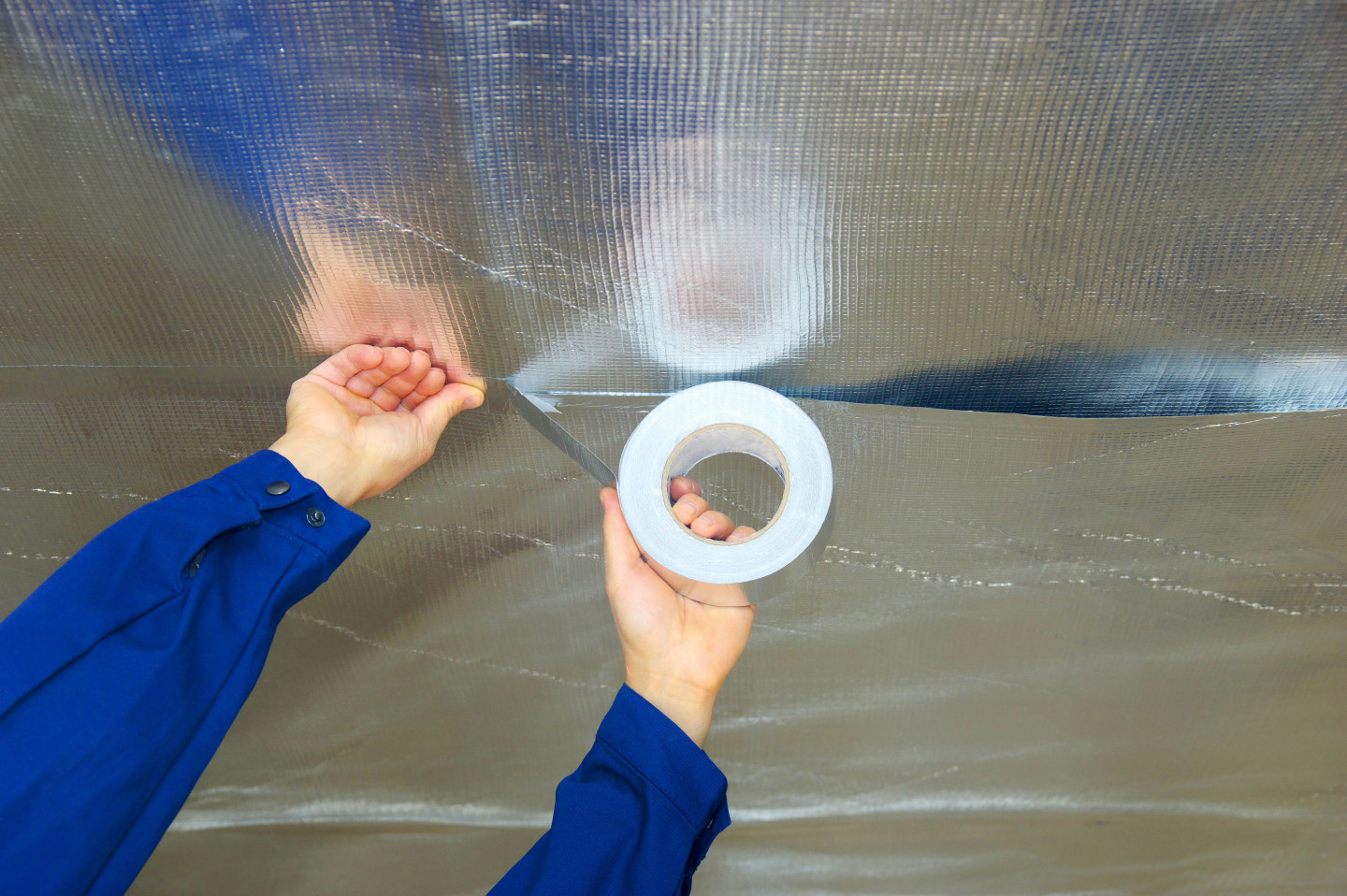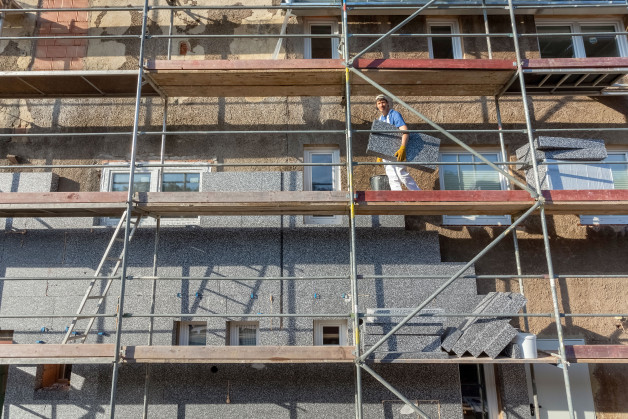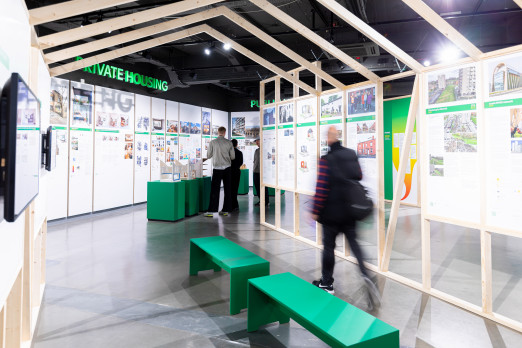The need to retrofit every house in the UK to net-zero standards is starting to be taken seriously – the current series being run by the Building Centre is welcome evidence of that. But we’ve been talking about this for decades, why has action taken so long? We are often told it's unproven technology, the lack of skilled trades, or the cost? The real problem is not these practicalities, they all have viable solutions, it’s the lack of political will and the social attitudes this engenders. It’s culture, not capacity.
Proven Technologies
Take heat pumps, they use the same technology as refrigerators which were developed over 200 years. Heat pumps have been in common use since the 1940s and they currently provide heating to about half the houses in Norway. Our apprehension about installing them here in the UK is entirely down to the fact that we are not familiar with them.
Quality Construction
What about trade skills? The key problem we have is not the lack of technical training, that can be readily provided through our established system of tertiary colleges and apprenticeships, it is the lack of quality control in construction. The most stringent building energy efficiency scheme in the world is Passivhaus (called EnerPHit for retrofit projects), originally developed in the 1980s and often referenced as the standard for net zero. Its core requirement is to provide a continuous insulated envelope with minimal thermal bridges and a high level of air tightness, outcomes which are entirely reliant on the care and attention to detail of the workers on site. It’s not especially difficult to achieve, we just have to make sure it is done.
Cost Benefits
Of course, the upfront cost of retrofitting is significant (I usually refer to an analysis of £26k per house on average, but estimates range from $10-15k up to £60-70k), but the current cost of living and energy crisis has shown us all that the old model of pumping energy into our houses to make them liveable exposes us to significant risks. In the new net-zero model, as we make our homes much more energy efficient, we reduce our heating bills and become more resilient.
Lord Deben from the Climate Change Committee put it this way when talking about new-build housing standards. All the major housebuilders had done the research needed to implement the Code for Sustainable Homes, first introduced in 2006 and scheduled to increase to the highest energy efficiency standards in 2016, but the government withdrew it (in part due to lobbying from the industry). Lord Deben noted that over a million new-build homes had been sold since then and each of those homebuyers had effectively paid for that research but had not got the benefits of it. In the current context, that is a million households that would have been better protected from the energy crisis. The same applies to the government’s various half-hearted retrofit programmes.
In any case, upfront costs will be offset by longer-term savings. Alongside reduced energy bills, retrofitted houses are likely to yield increased resale value and have better mortgage deals available. They will also provide improved health and well-being outcomes, reducing the burden on the medical system.
The House As Consumer Culture and Commodity
For all of those issues, the problem is not our capacity to take action, it is our refusal to make those actions a priority. It might seem like a stretch, but I think this is linked to our consumer culture and global market.
We have become so used to the idea that we can just buy new stuff, why worry about how efficiently it will function, how long it will last, or where in the world it has been made? This is as true for government and big business as it is for individuals. Fast fashion and fast food are the norm even if we’d like to think we make ethical choices. As Prof Giana Eckhardt from King’s Business School notes: "While consumers care about pressing social issues such as climate change and racial justice, their attitudes and beliefs are almost never a driver of their purchasing behaviour".
In many ways, our homes have become just another consumer product. We are encouraged to give our homes a makeover in the same shortened timeframe as fast fashion, to keep up with trends, and to replace rather than repair. But the focus is on aesthetics, rarely does energy efficiency become part of the buyer offering.
Our homes have also become commodities. They are considered primarily in terms of investment value rather than essential habitation. We calculate the quantity of new-build targets or minimum floor areas rather than the quality of the residents' health and well-being. This encourages a constant churn in house ownership, which means we tend to think of only short-term impacts. Mortgage holders live in a house for less than 10 years on average, and for private renters, it’s only 4.4 years.
Architects Robert and Brenda Vale challenge that notion, suggesting that we should consider our homes as part of national infrastructure because they influence how we function as a society far beyond the period any individual lives there.
Driving the Cultural Shift
How do we change those cultural attitudes, how do we make it normal to prioritise energy efficiency, to apply the level of care and attention that is needed to make our homes truly sustainable, whether new-build or retrofit?
Governments must take the lead. Flip-flopping about green policies sends all the wrong signals, we need a clear and consistent direction of travel defined even if the details have not been fully resolved. In a positive example, the Scottish Building regulations have recently been changed so that all building warrant applications must meet the same upgraded insulation levels, including conversions, extensions and refurbishments where previously a lower standard had been applied compared to new-builds.
But no matter what government policies say it will be the finance sector that determines the pace of change, that was the clear message I got from COP26 in Glasgow. Mike Teal from Snugg recently explained to me how the capital charge for banks works, that is the amount of cash they must set aside to mitigate against the risk of their loans. In simple terms, the lower the capital charge, the more funds will be available for loans to generate profits. The energy efficiency of houses they have mortgages over is now starting to be included among the risks considered. The more A-grade houses, the lower the risk and the lower the capital charge. Hence there will be a direct financial incentive for banks to help finance retrofit works by their mortgage holders.
What about those of us working in the built environment, the average tradie or designer or sales staff at the building merchants, what role can we play as individuals to change the culture of a whole industry? Ask questions. Suggest alternative design strategies. Promote low-carbon products. If you are quoting to fit a new kitchen, provide a cost to insulate the external walls at the same time (it will be too late after the cabinets are installed). Talk about the positives of heat pumps rather than being jokey and sceptical. A marketing executive once explained to me that to make an issue like sustainable homes “normal” we have to make it part of “water-cooler discussions”.
Culture, Not Capacity
The only barrier to the rapid and radical transition to net zero buildings is the lack of political and social will. We are starting to understand that making our houses energy efficient is a critical part of net zero yet still suffer from the misconception this is an almost insurmountable challenge. But we do have the capacity, the technologies are proven, we just need to implement them with a focus on quality outcomes, and recognise that upfront costs will be offset by broader personal and societal benefits.
Have no doubt this is the direction of travel. The cogs of government and finance are already in motion and will not be stopped, but we can influence the pace of change. If we start talking up retrofit, if we make it part of our water-cooler discussions, it will become normal practice much faster than we could ever have expected.
Ran Boydell has studied and practised architecture in the UK and his native Australia for over three decades. At a time of major global challenges, Ran’s professional focus has turned to architecture that delivers on zero-carbon targets and broader sustainability issues such as the Circular Economy and Natural or Social Capital. He works across disciplines to help drive a rapid transition to a sustainable construction sector. Ran teaches university courses on sustainable development, researches and writes about current sustainability issues, was a founder of the #ArchitectsDeclare initiative in Australia, and is a pioneer of sustainable homes for the residential mass market. Read more from Ran Boydell now.


